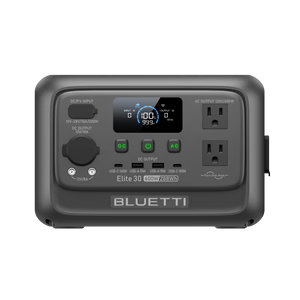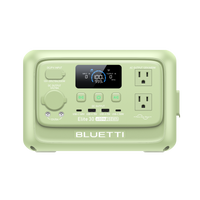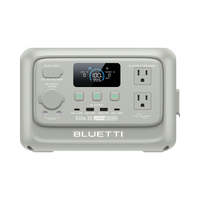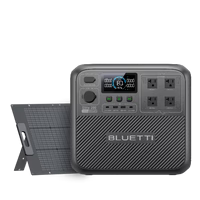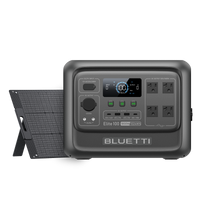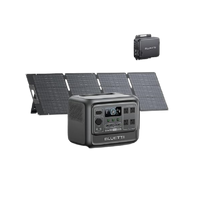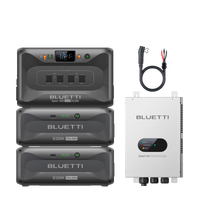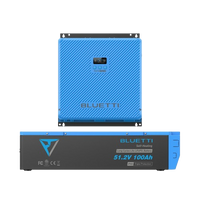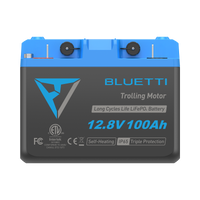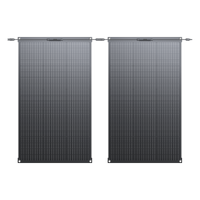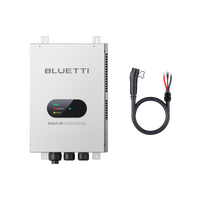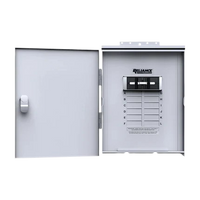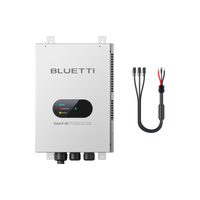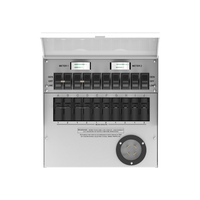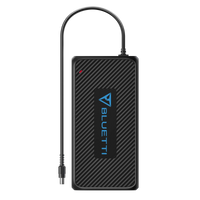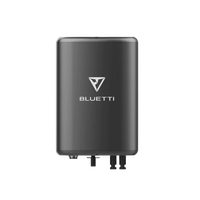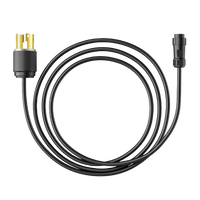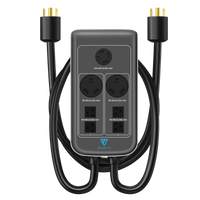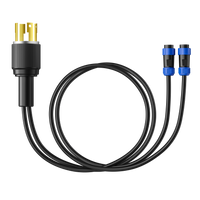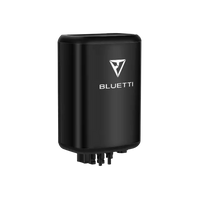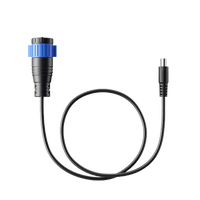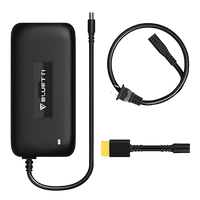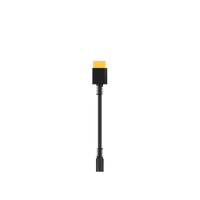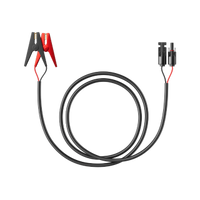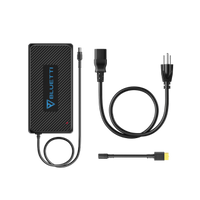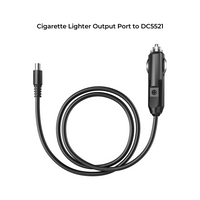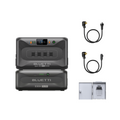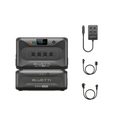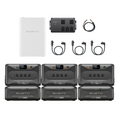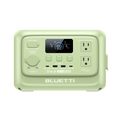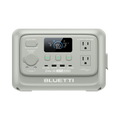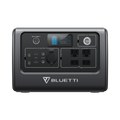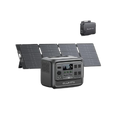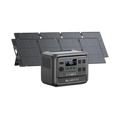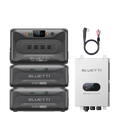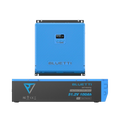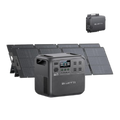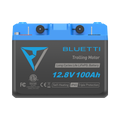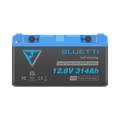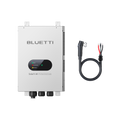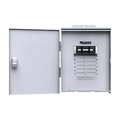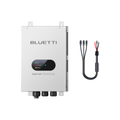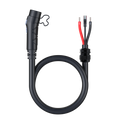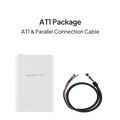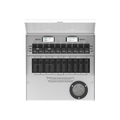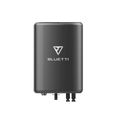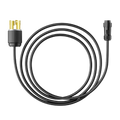Solar generators appeared among the powerful tools on the path toward green power generation. These devices use sun energy to supply electricity, a cleaner substitute to the conventional ones that burn fossil fuels. They are most praised for their renewable-energy resources, low cost of operation, and silent operation. However, they have limitations regarding low energy reserves, high development costs, and long recharge times. This post examines the benefits and drawbacks of these setups to provide the reader with a complete picture of their good and bad. Along the journey of this topic, we will discover whether or not daylight electricity is a viable resource for use as an energy system.
What is a Solar Generator?
A solar generator is a complex setup that utilizes solar radiation to generate, transfer, and store energy. A daylight-powered charging device transforms the sunshine's power into energy. The main job of the daylight collectors is to convert the sunlight into direct current. This DC is then converted to alternating current via an AC power inverter.
The wattage may change dramatically throughout the day due to weather conditions, cloud cover, or shade. The solar panels are usually hooked up to a charge controller that puts the surplus power into one or more batteries. The batteries act as a fuel tank for the energy, just like a gasoline or diesel generator. This mechanism allows the solar power plant to keep working even when it is cloudy or dark.
A solar generator is a reliable and ecological way to produce electricity. It is environmentally friendly because it utilizes sunlight's energy. Thus, solar generators are implemented, especially when camping with RVs, in boats, and as backup power in a grid power outage.
How Do Solar Generators Work?

This generator is a gadget that uses sunrays to produce electric energy. Contrary to popular belief, the process of generating daylight power is not mystical or supernatural. It operates on the basis of a scientific principle dubbed the photovoltaic effect.
This is how it actually works.
- Sunlight to Direct Current: Solar panels are the sunlight-capturing modules that consist of photovoltaic cells. These cells use light as an energy source and convert it into direct current (DC) current.
- Processing for Storage: Thus, the DC power then goes through the charge controller. This tool controls the supply of electricity into the battery, and the solar energy that is generated is stored in the battery for later usage.
- Conversion to AC and Power Output: On demand, an inverter inside the solar generator changes the stored DC electricity in the battery to AC electricity. This AC power will then flow to your devices and household appliances.
Unlike the other types of generators, solar generators are clean and at the same time, a renewable source of energy. They come in handy for RV camping, marine use (boats) and in case of a grid power interruption. Nevertheless, their efficiency will be determined by weather conditions and the configuration of the solar panels. In spite of such difficulties, solar energy could be the best remedial way towards sustainable energy production.
Pros of Solar Generators
Solar generators are equipped with numerous pros that explain why they are so popular among consumers. Check some indispensable benefits:
- Eco-Friendly: These systems turn sunlight, a renewable resource, into electric power. Instead of emitting harmful carbon emissions and adding to the environmental pollution, this energy generation does not release any of the same pollutants. Therefore, it contributes to a healthier surrounding and lowers fuel emissions.
- Non-toxic: Solar generators are the safest and cleanest sources of energy. This type of generator won’t output carbon monoxide when used, unlike gas generators that produce toxic gas, which can be fatal if in large amounts.
- Noiseless and Odorless: Solar generators don't emit sound or give rise to odours, allowing people to go on trips where silence and tranquillity are desired to use such equipment. They don’t have moving parts or burn fuel; thus, they produce energy completely pollution-free and silently.
- Long-Lasting: The typical lifetime of solar generators ranges from 25 to 35 years. After that, the batteries still provide the functionality needed at a much lower level, approximately 20% of their original efficiency. This means they can continue to produce power, although less than before, and add to your energy needs.
- Easy Maintenance: Solar generators are particularly advantageous because they have low maintenance costs, making them more convenient and cost-effective. Solar generators are easier to maintain than gas generators, in which components are subject to replacement or regular servicing.
- Greater Convenience: Small solar generators are compact and lightweight, facilitating transportation and setup. In contrast, gas generators often weigh a lot and take up more space when filled with gas, adding to their handling problems.
- Free Energy: One of the main benefits of solar generators is that they give consumers a free energy source. After the initial investment is covered, the electricity produced is almost free; the only resource used is solar radiation, which is free and abundant in nature.
Cons of Solar Generators
While solar power generators have many merits, they also possess some disadvantages.
Discussed below are some of the major cons.
- Dependent on Sunlight: Solar generators use sunlight to generate power. This implies they can’t produce energy at night or during cloudy conditions. Nevertheless, this problem is compensated for through batteries, which store energy throughout the day for use at night or when the sun is not shining.
- Temperature Sensitivity: Temperature-related issues were a serious problem for solar generators, especially when the batteries underwent fast degradation due to extreme heat. Currently, the top modern solar generators have advanced materials, insulation, and cooling systems to address this problem, but it is important to note that it’s a crucial factor, particularly in very hot environments.
- High Initial Cost: The setup for solar generators is costlier than that of gas generators, which remain the cheapest alternative type. In this case, a generator costs between a few hundred dollars and about a thousand dollars.
- Slow Recharging: If only solar power is extracted, it can take a while for solar generators to fully recharge. If the generator's power is drained immediately, you may need to refuel it from another power source or a UPS battery.
Top 3 Solar Generator Kits
BLUETTI AC200MAX+PV200 Solar Kit

It's a perfect choice when you go on a remote trip or for the power backup of your home when the grid is down. This equipment, priced at C$2,598.00, has a 2,200W AC pure sine wave inverter that can respond to surges up to 4,800W, making it suitable for powering heavy appliances. This kit's 2048wh LiFePO4 battery is worth noting, thanks to its better cyclability (over 3500 cycles at 80% capacity). With an expandable serviceable up to 8,192Wh, it becomes a highly efficient device applicable to greater power demands.
The solar input capability is up to 900W, which when combined with the PV200 Solar Panel, which under decent sunlight will have a maximum efficiency of 23.4%, the power charger is capable of outputting the maximum wattage it is capable of. The panel's ETFE covering and lightweight add to its convenience, making it an excellent companion in solar power conversion. Utilizing smart control options via the BLUETTI app allows users to check on and control power usage from anywhere.
BLUETTI AC200P+2*PV200 Solar Kit

At CAD $2,897, this product achieves a lower run time due to 2,000Wh capacity but allows for a greater number of outputs of 17, which a user can use to simultaneously charge a higher number of devices. The set of twin solar PV200 enables simultaneous charging with DC input up to 1.4KW, which results in the highest charging speed. Due to its eco-friendliness, quiet operation, and low cost, this kit was chosen by people who desire a continuous power supply with no pollution impact as traditional generators do.
The PV200 panels have the same high-grade characteristics as standalone ones: monocrystalline cells and long-lasting ETFE covering. Their ability to work with any MC4-brand solar generator makes them ideal for multiple purposes.
BLUETTI AC300+B300+3*PV350 Solar Kit

This big system, priced at C$6,796.00, is the master of the three. With a punching 3000W pure sine wave AC inverter, this machine can peak power up to 6000W. The base package has a capacity of 3,072Wh, and it can be augmented to 12,288 Wh, which is adequate in case of all extreme events. Its 240 V split phase bonding and 24/7 UPS home backup bring the perfect whole-home power supply during a power interruption.
The kit packaging contains three PV350 solar panels of excellent quality that have a considerably higher capability of conversion and 350W output per each of the panels. They are usually easy to assemble and are strong as well as waterproof which make them suitable for outside use. Compared to the traditional fixed solar panel systems, they fold, fit, and are portable. This can make them to be easily set up on the site, bring about 1,050W DC power through these systems.
Final Thoughts
Cumulatively, this is an indication that solar power generators are a viable alternative to conventional power-producing methods. They feature low carbon footprints, zero emission, quiet and smooth running modes, long life-span, no maintenance requirements and added convenience in operation, making them very attractive. On the other hand, these systems may not be perfect because there are so many hurdles they face, such as low efficiency under shading conditions, the effect of higher temperature, the high initial cost, the slow recharging rate, the least power produced, and the vulnerability to windy weather.
Even if they can't be ideal, their pros definitely prevail over their cons, reason why they are worth taking. Technologically, it would not be surprising to visualize the future in which the sun generators would be developed and would be the ideal source of energy. It is highly likely that solar generators have a bright future ahead.






